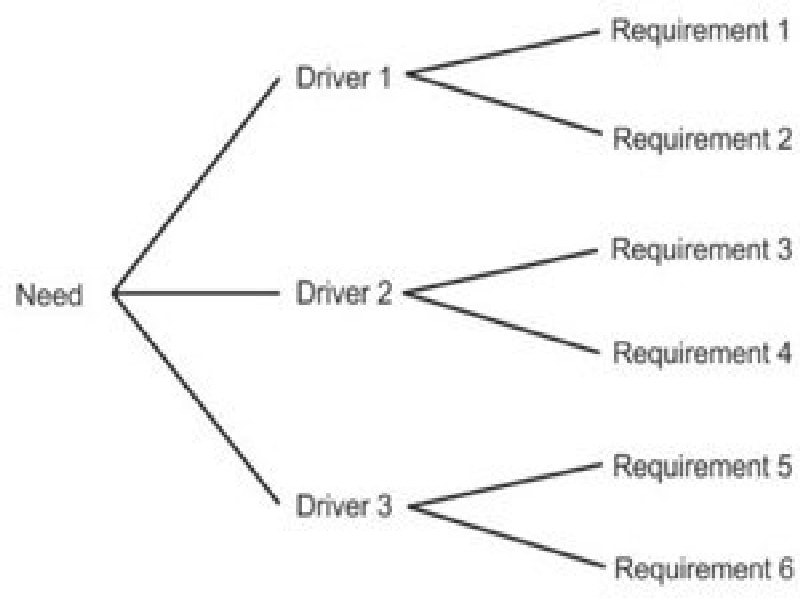Table of Contents
What is Critical to Quality?
Critical to Quality is the conversion of Critical to Customers factors into certain measurable and controllable manufacturing and/or delivery processes.
These processes are internal to the management and due to their quantitative nature, the management can easily control them, measure deviations, if any and rectify these deviations to improve the customer experience.
Originally developed by Motorola in the 1980s, Six Sigma is a renowned set of management techniques that is very well received and implemented worldwide. It is a management approach that is based on data and statistics to ensure continuous improvement in manufacturing and business processes, products and services through eliminating errors. Critical to Quality is one such important parameter under Six Sigma.
What is Critical to Customers?
In order to understand Critical to Quality, we must first understand Critical to Customers. Let’s comprehend these concepts with the help of an example. E.g. You are a restaurateur. Your customers want the food that you serve to be good. Now the term ‘good’ is quite vague to define.
How would you, the entrepreneur, know what is ‘good’? How would you translate this ‘good’ into some tangible, measurable benchmarks that you can explain to the human resources working for you? How would you exercise control over this ‘good’? This job is done by concepts of Critical-To-Customers and Critical-To-Quality under the discipline of Six Sigma.
Example of Critical to Customers in a restaurant
Now, continuing with the above-mentioned example, it is a restaurant owner’s quest to understand what is the ‘good’ that his customers desire. This ‘good’ is nothing but certain product and service parameters that enhance the customers’ experience of having food in your restaurant. These would be the factors that would make the customers feel good. So, what would these factors or parameters be?
These parameters can be broadly classified as 1. Prompt Delivery 2. Palatable and Uniform taste 3. Piping hot food 4. Cleanliness in the restaurant and 5. Reasonable prices
All the above-mentioned factors must be present when a customer enters and orders food to make him feel good about the product and services that you offer. These are known as Critical to Customers.
Example of Critical to Quality in a restaurant
Now, in the same example that we have cited above, how would the restaurant owner convert the critical-to customer’s factors into measurable critical-to-quality processes? It would be done in the following manner:
| Critical-To-Customers | Critical-To-Quality |
|---|---|
| Prompt Delivery | A set time, say 12 minutes, for noting down the customer’s order, notifying the kitchen and serving the customer. |
| Palatable and Uniform Taste | Using standard recipe with measured ingredients and predecided cooking time to maintain consistent, customer-approved taste. |
| Piping Hot Food | Maintaining the temperature between 30 degrees to 50 degrees C, depending upon the type of dish. |
| Cleanliness in the restaurant | Setting up a floor and tables cleaning routine at every 10 minutes. Washing the dishes in hot water. |
| Reasonable prices | Regular prices within an acceptable range. b. Benefits to customers in the form of promotions, offers, loyalty discounts etc. |
Now, here; it is clearly evident that the Critical-To-Quality process transforms a vague ‘Good food’ requirement of the customers into seven specific parameters upon which management can take action and exercise control on a continual basis to improve customer satisfaction.
Thus, Critical-To-Quality builds a bridge between what the customer wants and how the organization serves it.
Critical to Quality Trees
CTQ Trees (Critical-To-Quality Trees) are the tools to implement Critical-To-Quality procedure. They are the diagrammatic representation of the needs of the customers or satisfaction drivers’, as referred to in the diagram above and the translation of these drivers into the specific metrics, processes or requirements that an organization can understand, act upon and control.
Process of developing a CTQ Tree
1) Identify the critical needs of the customers
Here, the business organization identifies the factors that are critical for the customers to feel good about using the product or services. The business can do incorporate these broader customer requirements into their CTQ tree by taking inputs from the salespeople.
This is because the sales force gets to communicate directly with the end-users of the products and hence, is better positioned to understand their pain points and requirements.
2) Convert these needs into a specific process parameter:
After understanding the customer requirements, the business has to convert these into specific parameters of the business processes that are used to manufacture the product or deliver a service.
E.g. If a customer wants ‘good customer service’, from the business process perspective, this translates into the parameters such as greeting the customer immediately when she enters the premises, responding to all the queries, etc.
3) Attach performance metrics to that factor, so that the deviations can be measured and controlled by the organization
After the business determines the business process parameters of a CTQ Tree, it has to attach specific, measurable performance metrics to each of these parameters so as to communicate the expectations clearly to the human resource of the organization and control deviation, if any.
Continuing the example above, the performance metric for greeting the customer will be greeting the customer within 30 seconds of her entering the premises, responding to all the queries within three minutes. The management has to observe if these time-limits are adhered to or not.
Characteristics of CTQ
- CTQ is a very specific and measurable form of a business process.
- CTQ is collected from VoC (Voice of Customer). Its genesis lies in the expectations of customers as conveyed by the customer points of contact.
- CTQ is used internally, within the business organization to help the management direct business processes.
- CTQ as a standard is actionable and controllable
- CTQ connects the customers’ expectations and the business’s response to the same seamlessly
Benefits of CTQ
1) Meets customer expectations
The business can successfully fulfill its customers’ expectations with the help of CTQ.
2) Possibility to surpass expectations
With CTQ, not only the present expectations can be met but it is possible to raise the bar higher by offering newer elements of product odr services. This is made possible by meticulously scrutinizing the performance standards and deviations under CTQ.
3) Elevates customer experience
The customer benefits from the implementation of CTQ in the form of sophisticated versions of products and services.
4) Enhances organization brand value
The business earns a reputation for meeting and exceeding customers’ expectations on a continuous basis, which builds its brand value.
Prerequisites for the successful mapping of CTQs
1) Data quality – correct, complete, relevant, unbiased
For a business organization to successfully design and implement a CTQ Tree, the data that it gathers should be correct, complete, relevant for its business segment and unbiased. If the data is erroneous, so would be the performance parameters and metrics.
2) Choosing critical performance metrics
Choosing the correct performance parameters that are critical for customers’ satisfaction is of prime importance. If not, the business may end up spending its time and precious resources on mapping wrong customers’ expectations, which will be a futile exercise.
3) Product performance measures must be quantified
The performance metrics must render themselves to quantification. Else, it won’t be possible for the business to measure and control them.
4) Using Quality Function Deployment
Quality Function Deployment (QFD) or the house of Quality is the most important tool used for defining CTQ Trees. It offers a structured approach to identify critical customers’ expectations, convert them into process parameters and quantify them. It was developed by Yoji Akao in 1966.
5) cross-functional cooperation
Cooperation across various functions of business such as engineering, operations, marketing, HR, etc. is pivotal for CTQ Tress to be successful.
6) Easy to understand documentation
The entire process of designing and implementing CTQ shouldn’t be too complex so as to mar the initiative of the lower rungs of management, who are, in the end, responsible for its implementation. The documentation should be minimal and easy-to-understand.
Impacts of not identifying CTQs
- Inconsistent product and service offerings by the business
- Increased rate of rejections due to defective products and services
- Delays in responding to customers’ need, leading to inferior customer experience.
- Increased cost for the business to remodel the product to meet consumer demands and loss of opportunities to capture new markets
- Lower profitability.
Liked this post? Check out the complete series on Operations Management



Very nice narration, thanks sir